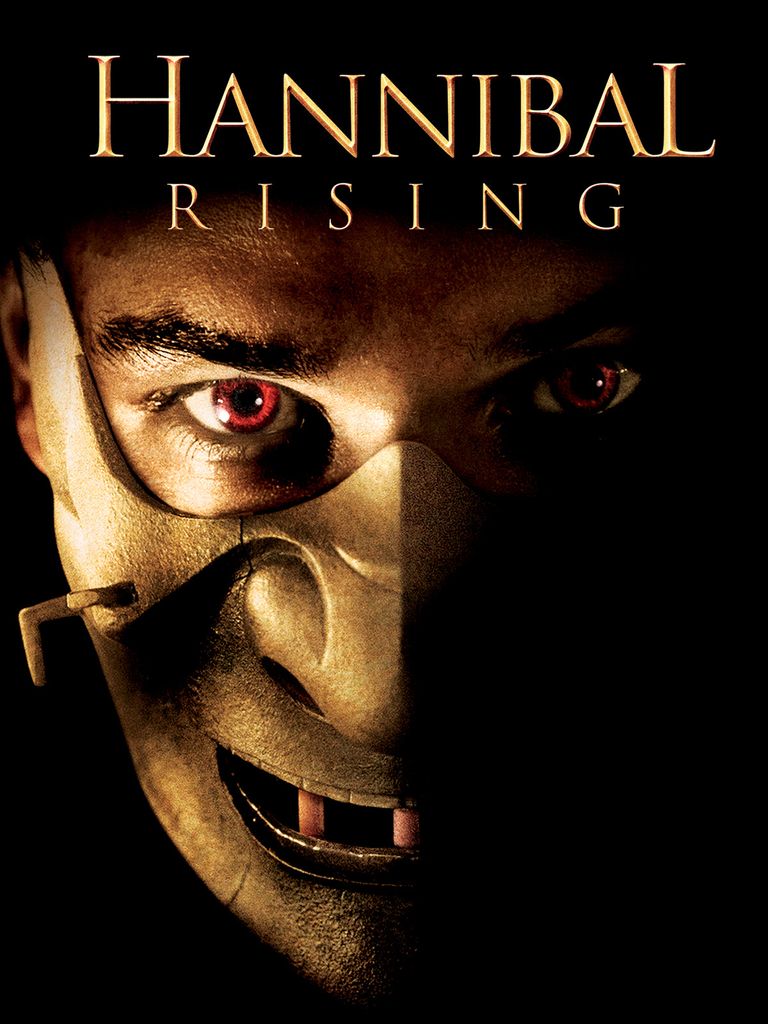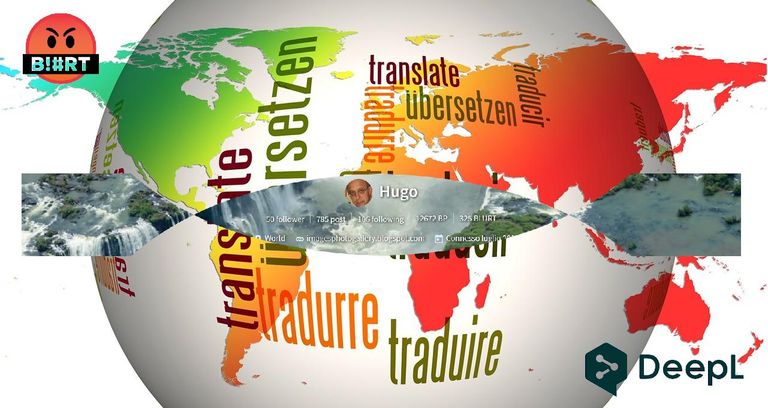
Serial killers have always been part of the collective imagination: the idea of a man who becomes a predator and starts killing his fellow man is too perverse and fascinating not to stimulate our taste for the macabre. In reality, many of them have a fan base equivalent to that of rock stars, and dozens of profilers study them, delving into their disturbed minds.
In the reality created by film and books, in parallel, serial killers are many and are depicted in different facets and types. Examples are numerous and range from the disturbed Norman Bates (Psycho) to the absurdly evil Peter and Paul (the killers in the masterpiece Funny Games).
The most famous cinematic serial killer is undoubtedly Hannibal Lecter, who, with his gentle manner and peculiar source of energy, has become an icon of lucid, usable evil in the pursuit of noble ideals. Several films have been made about him, three of them starring a superb Anthony Hopkins (who had a hard time letting go of this character).
Hannibal Lecter - The Origins of Evil is a prequel that recounts the adventures of the young Lecter, but above all the genesis of his madness. It is based, as you might expect, on the novel of the same name by Thomas Harris, who was ‘forced’ to go back on the story after the extraordinary success of the book and the film.
It is the fifth film based on the novels centred on the young serial killer Hannibal Lecter, but in terms of the chronology of the narrative, it is a precursor to The Silence of the Lambs, the genesis of his madness.
Almost all of us who have seen and/or read The Silence of the Lambs have been left wondering what Dr. Hannibal Lecter was like as a child and at what point his murderous, cannibalistic madness was unleashed.
This well-told story clears up all these doubts. Although, at times, the absence of Anthony Hopkins is noticeable.

Los asesinos en serie siempre han formado parte del imaginario colectivo: la idea de un hombre que se convierte en depredador y empieza a matar a sus semejantes es algo demasiado perverso y fascinante como para no estimular nuestro gusto por lo macabro. En la realidad, muchos de ellos tienen una base de fans equivalente a la de las estrellas de rock, y decenas de perfiladores los estudian, ahondando en sus mentes perturbadas.
En la realidad creada por el cine y los libros, paralelamente, los asesinos en serie son muchos y se representan en distintas facetas y tipos. Los ejemplos son numerosos y van desde el perturbado Norman Bates (Psicosis), hasta los absurdamente malvados Peter y Paul (los asesinos de la obra maestra Funny Games).
El asesino en serie cinematográfico más famoso es, sin duda, Hannibal Lecter, que con sus maneras apacibles y su peculiar fuente de energía se ha erigido en icono del mal lúcido y aprovechable en la puesta en práctica de nobles ideales. Sobre su figura se han rodado varias películas, tres de ellas protagonizadas por un soberbio Anthony Hopkins (al que le costó mucho desprenderse de este personaje).
Hannibal Lecter - Los orígenes del mal es una precuela que narra las aventuras del joven Lecter, pero sobre todo la génesis de su locura. Está basada como es lógico suponer en la novela homónima de Thomas Harris quien se vio "obligado" a volver para atrás con la historia luego del extraodinario exito del libro primero y de la pelicula después.
Es la quinta película basada en las novelas centradas en la figura del joven asesino en serie Hannibal Lecter, pero en cuanto a la cronología de la narración, constituye un antecedente de El silencio de los corderos, génesis de su locura.
Casi todos los que hemos visto y/o leido el Silencio de los Inocentes hemos quedado enganchados con la duda de como seria el doctor Hannibal Lecter cuano pequeño y en que momento se había desatado en él esa locura asesina y canibalesca.
Esta historia muy bien contada nos aclara todas estas dudas. Aunque, por momentos, se note la ausencia de Anthony Hopkins.

The story begins with little Hannibal Lecter playing with his little sister Mischa at the age of 8 in the family castle in Lithuania. They immediately have to evacuate because the Nazis invade and occupy everything with flankers in tow.
The family takes refuge in a farmhouse in the forest, but during a battle between a Soviet tank and a German Stuka bomber they are all killed, leaving the two children alone. A band of pro-Nazi looters (Grutas, Dortlich, Grentz, Kolnas, Milko and Pot Watcher, known as ‘Barbed Wire’) take refuge in the farmhouse and hold the two children captive, but the freezing winter soon exhausts their supplies. The six, starving, decide to kill and eat the boy in order to survive. Hannibal himself unwittingly eats his sister. They then escape when a Russian bombardment arrives, but Barbed Wire, carrying the group's dog tags, is killed in the collapse of the house.
Hannibal is saved and grows up in his castle converted into an orphanage by the Soviet government. But he has problems with his superiors, frequent nightmares and does not speak. He manages to escape, retrieves some letters from his mother and arrives in Paris, where he is taken in by his aunt-in-law, a rich Japanese woman, Lady Murasaki. He heals with her and speaks again, but revenge continues to ruminate in his heart, and the teachings of martial arts (especially kendo), classical music, painting and ikebana occupy his days. With the weapons of a samurai he carries out his first murder, decapitating with a katana a fat, coarse butcher who had collaborated with the Nazis and offended his aunt.
He enrols in medical school and learns to dissect corpses. She returns to Lithuania to search for evidence and try to remember the events. He finds his sister's bones, some jewellery and military plates with the names of the murderers. Meanwhile, one of them (Dortlich) tries to catch him by surprise, but Hannibal immobilises him and after tying him to a tree gets him to confess and give him more information about his former comrades. The rope across his neck, pulled by a horse, becomes tighter and tighter until his head comes off and Hannibal eats his cheeks (his first conscious act of cannibalism) with mushrooms.
One by one they all fall off. He is forced to move to Canada, where the last executed man has taken refuge.

La historia comienza con el pequeño Hannibal Lecter jugando con su hermana pequeña Mischa a la edad de 8 años en el castillo familiar en Lituania. Inmediatamente tienen que evacuar porque los nazis invaden y ocupan todo con flanqueadores a cuestas.
La familia se refugia en una granja en el bosque, pero durante un combate entre un tanque soviético y un bombardero Stuka alemán mueren todos, dejando solos a los dos niños. Una banda de saqueadores pronazis (Grutas, Dortlich, Grentz, Kolnas, Milko y Pot Watcher, conocido como «Barbed Wire») se refugia en la granja y mantiene cautivos a los dos niños, pero el gélido invierno pronto agota las provisiones. Los seis, hambrientos, deciden matar y comerse al niño para sobrevivir. El propio Hannibal, sin darse cuenta, se come a su hermana. Después escapan cuando llega un bombardeo ruso, pero Barbed Wire, que lleva consigo las placas de identificación del grupo, muere en el derrumbamiento de la casa.
Hannibal se salva y crece en su castillo convertido en orfanato por el gobierno soviético. Pero tiene problemas con sus superiores, pesadillas frecuentes y no habla. Consigue escapar, recupera algunas cartas de su madre y llega a París, donde es acogido por su tía política, una rica japonesa, Lady Murasaki. Se cura con ella y vuelve a hablar, pero la venganza sigue rumiando en su corazón, y las enseñanzas de las artes marciales (sobre todo el kendo), la música clásica, la pintura y el ikebana ocupan sus días. Con las armas de un samurai lleva a cabo su primer asesinato, decapitando con una katana a un carnicero gordo y tosco que había colaborado con los nazis y ofendido a su tía.
Se matricula en medicina y aprende a diseccionar cadáveres. Regresa a Lituania para buscar pruebas e intentar recordar los hechos. Encuentra los huesos de su hermana, algunas joyas y placas militares con los nombres de los asesinos. Mientras tanto, uno de ellos (Dortlich) intenta cogerle por sorpresa, pero Aníbal le inmoviliza y tras atarle a un árbol consigue que confiese y le dé más información sobre sus antiguos compañeros. La cuerda que le cruza el cuello, tirada por un caballo, se va tensando cada vez más hasta que se le desprende la cabeza y Aníbal se come sus mejillas (su primer acto de canibalismo consciente) con unas setas.
Uno a uno irán cayendo todos. Se verá obligado a trasladarse a Canadá, donde se ha refugiado el último ejecutado.

Dark atmospheres and European landscapes for the prequel to Hannibal Lecter's young life. We are in Lithuania, in 1943, Hannibal is a normal child at least until German troops destroy his family. The little boy is one of the many to be affected by the horrors of war and will be scarred forever. The plot of the film, in fact, is woven around the death of his little sister Misha, taken hostage with her brother and then eaten by a group of hungry and unscrupulous Nazis. Thus Hannibal comes almost mystically into contact with the taste of human flesh from which he will never again be separated.
The second part of the film focuses on Lecter's relationship with his aunt-in-law, Lady Murasaki, a Japanese woman who lost everything and everyone during the war and to whom Hannibal moves. In his aunt's castle, a young and intriguing Hannibal learns the art of the samurai, becoming (a little too inspired by a suit of armour whose face resembles the mask of strength he will wear in a couple of years), a kind of ninja-vendor-soldier. Between skewering cheeks and eating liver, Lecter avenges his sister's death, but by now he is no longer a man (or wasn't he before?). Not even the (requited) love he feels for the oriental lady will save him from his fate as a hardened cannibal.
The plot is what it is, limited only to a brief panormamic on the life of the world's most famous cannibal as a young man. The greatest credit goes to director Peter Webber (The Girl with a Pearl Earring) who made three choices with accuracy: the protagonist, the cinematography and the landscapes. Gaspard Ullier's (A Long Sunday of Passions) gaze keeps any viewer glued to the seat and creates a sort of (again, mystical) empathy with the audience. Bad yes, but with style

Atmósferas oscuras y paisajes europeos para la precuela de la joven vida de Hannibal Lecter. Estamos en Lituania, en 1943, Hannibal es un niño normal al menos hasta que las tropas alemanas destruyen a su familia. El pequeño es uno de los muchos afectados por los horrores de la guerra y quedará marcado para siempre. La trama de la película, de hecho, se teje en torno a la muerte de su hermana pequeña Misha, tomada como rehén junto a su hermano y luego devorada por un grupo de nazis hambrientos y sin escrúpulos. De este modo, Hannibal entra en contacto casi místico con el sabor de la carne humana, del que nunca más se separará.
La segunda parte de la película se centra en la relación de Lecter con su tía política, Lady Murasaki, una japonesa que lo perdió todo y a todos durante la guerra y a la que Hannibal se traslada. En el castillo de su tía, un joven e intrigante Hannibal aprende el arte del samurai, convirtiéndose (un poco demasiado inspirado por una armadura cuyo rostro se asemeja a la máscara de fuerza que llevará en un par de años), en una especie de ninja-vendedor-soldado. Entre ensartar mejillas y comer hígado, Lecter venga la muerte de su hermana, pero ya no es un hombre (¿o no lo era antes?).
Ni siquiera el amor (correspondido) que siente por la dama oriental le salvará de su destino de caníbal empedernido. La trama es la que es, limitándose únicamente a una breve panormámica sobre la vida de juventud del caníbal más famoso del mundo. El mayor mérito corresponde al director Peter Webber (La joven de la perla), que acertó en tres elecciones: el protagonista, la fotografía y los paisajes. La mirada de Gaspard Ullier (Un largo domingo de pasiones) mantiene a cualquier espectador pegado al asiento y crea una especie de empatía (de nuevo, mística) con el público. Malo sí, pero con estilo

Gaspard Ulliel: Hannibal Lecter
Rhys Ifans: Vladis Grutas
Goran Kostić: Pot Watcher, also known as ‘Barbed Wire’.
Kevin McKidd: Petras Kolnás
Richard Brake: Enrikas Dortlich
Stephen Walters as Zigmas Milko
Ivan Marevich as Bronys Grentz
Gong Li as Mrs. Murasaki
Dominic West as Inspector Pascal Popil
Aaran Thomas: Hannibal as a child
Helena Lia Tachovka as Misha Lecter
Charles Maquignon: Paul Momund
Blessed Ben Ammar: Astrid Kolnas
Richard Leaf: Count Lecter
Ingeborga Dapkūnaitė: Lady Lecter

Gaspard Ulliel: Hannibal Lecter
Rhys Ifans: Vladis Grutas
Goran Kostić: Pot Watcher, también conocido como "Alambre de púas"
Kevin McKidd: Petras Kolnás
Richard Brake: Enrikas Dortlich
Stephen Walters: Zigmas Milko
Ivan Marevich: Bronys Grentz
Gong Li: Señora Murasaki
Dominic West: inspector Pascal Popil
Aaran Thomas: Aníbal de niño
Helena Lía Tachovka: Misha Lecter
Charles Maquignon: Paul Momund
Beato Ben Ammar: Astrid Kolnas
Richard Leaf: Conde Lecter
Ingeborga Dapkūnaitė: Lady Lecter


Credits for extracted images and screenshots of the trailer go to the IMDB site.
Credits for the final banner with the author's signature (modified with the freely distributed Kolour Paint program) go to Pixabay.
Los créditos por las imágenes extraídas y capturas de pantalla del trailer van al sitio IMDB.
Los créditos por el banner final con la firma del autor (modificado con el programa Kolour Paint de distribución libre y gratuita va a Pixabay.
Source images / Fuente imágenes: IMDB.

| Blogs, Sitios Web y Redes Sociales / Blogs, Webs & Social Networks | Plataformas de Contenidos/ Contents Platforms |
|---|---|
| Mi Blog / My Blog | Cine & Series de Cabecera. |
| Red Social Twitter / Twitter Social Network | @hugorep |

Telegram and Whatsapp
Thanks!